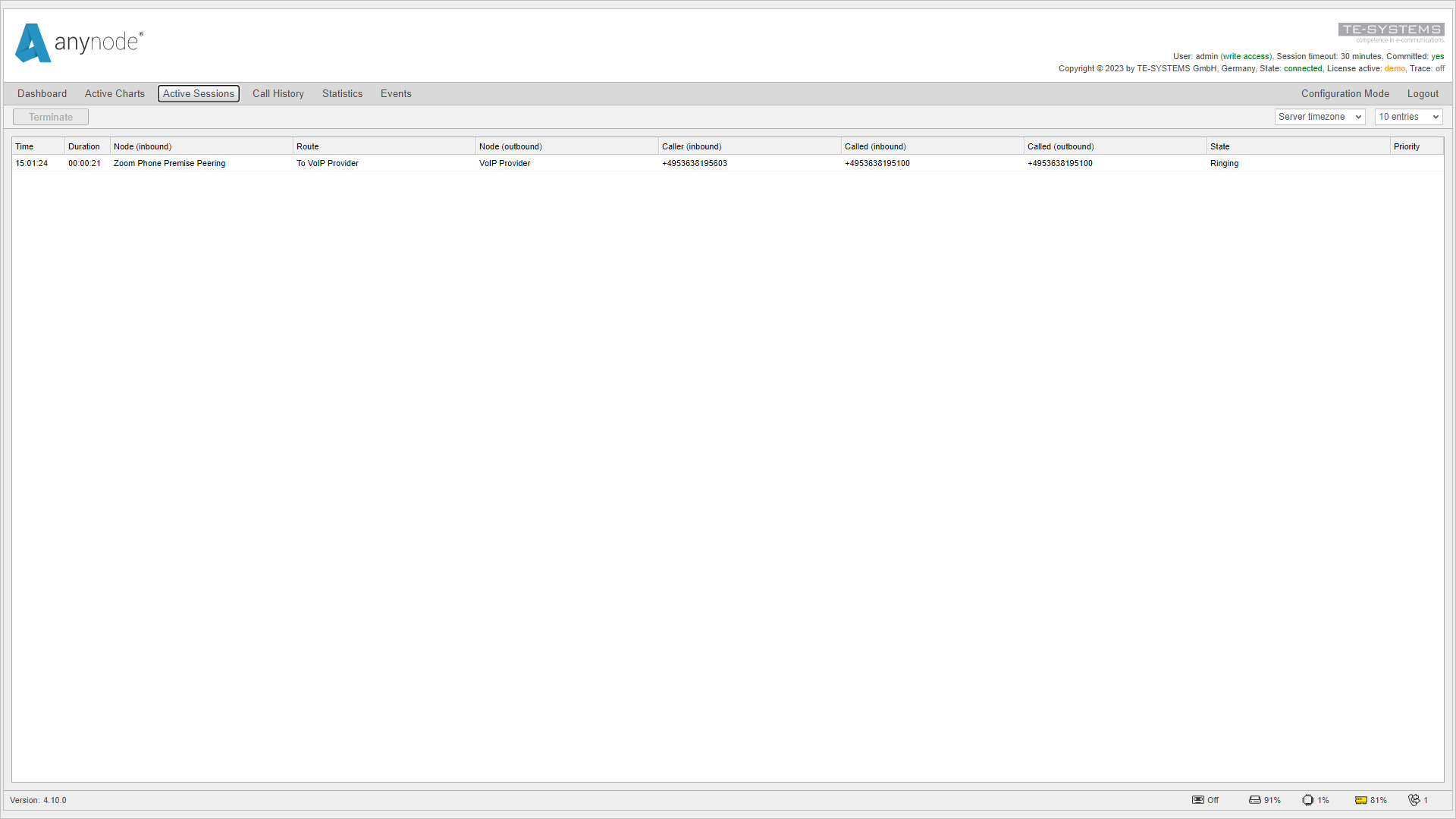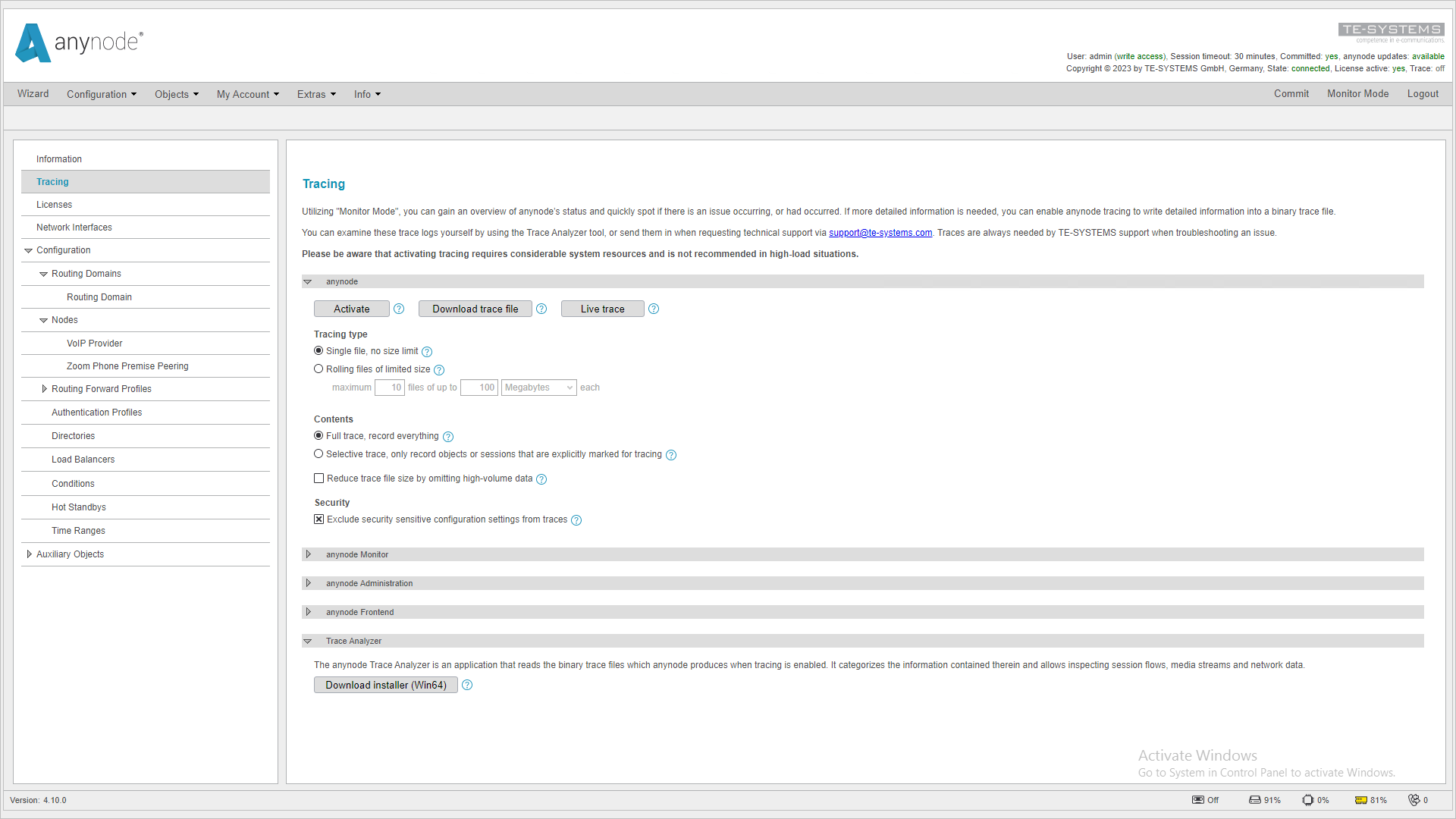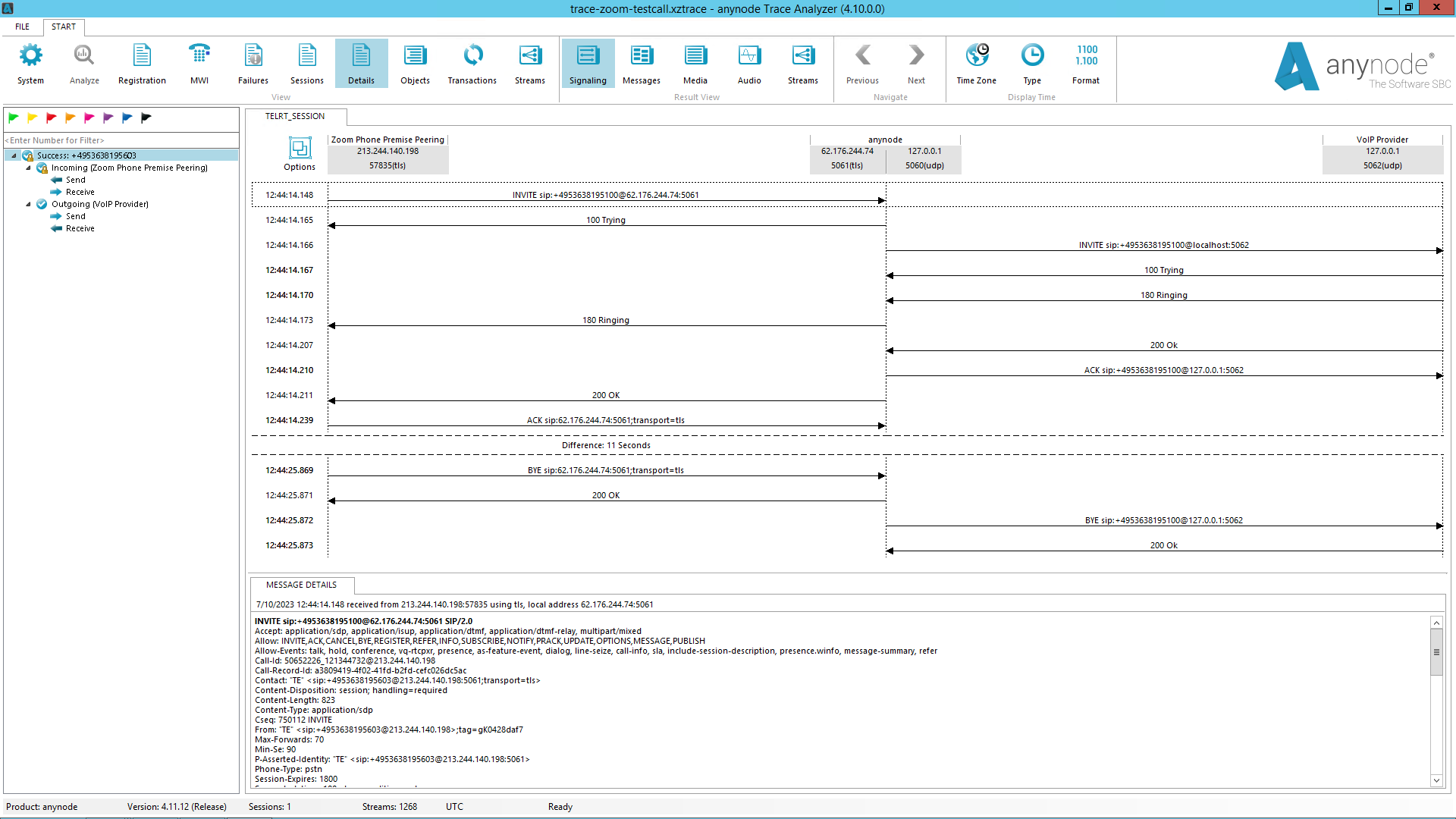
Test Call
After completing the configuration process, it is highly recommended to conduct a test call and start a trace before confirming that all nodes are working correctly and that the chosen route is functioning as expected.
Now, switch to and click on in the left menu tree.
For quick access to the trace configuration, there is the option of using a shortcut via the trace display. Simply click on Trace in the top right corner. The display there will also indicate whether a trace is currently active.
In case of VoIP network issues, the communication between anynode and the remote endpoints are logged into a binary file, upon enabling the anynode trace function. This file is then analyzed using the Trace Analyzer tool.
It is of particular importance to start the trace at the right time. The beginning of all relevant calls should be included in the trace.
In most cases, the default values for the trace settings are sufficient.
Click on to enable trace recording.
How you can analyze the SIP signaling flows via the anynode Trace Analyzer to troubleshoot issues when using anynode within your VoIP infrastructure.
Now, start a test call.
Switch to in the upper right corner and click on Active Sessions to see all ongoing and completed calls.
To conduct an audio quality check, please engage in conversation on both ends of the call for a period of time.
Recently disconnected calls are also visible for 5 seconds, allowing immediate visibility of rejected or terminated calls.
In this example, we will make a call from the Zoom client to the provider and confirm the proper usage of the route.
Additionally, you can view all past calls in the Call History section.


Now, let's switch to again. Click on Tracing in the left menu tree.
Stop the trace recording with Deactivate. Then, you download the trace file from the server where anynode is installed by using Download trace file to save the trace to your desired location.
To analyze anynode trace files, TE-SYSTEMS provides the Trace Analyzer, a powerful Windows-based tool for analyzing and debugging anynode trace files. If you are working via remote access, the Trace Analyzer must be downloaded separately and installed from the anynode server to the workstation. You can also download the anynode Trace Analyzer directly to your Windows workstation from the anynode frontend with a click on Download Installer.
The anynode Trace Analyzer empowers you to identify causes of problems very quickly, so you can choose whether to resolve it on your own, or alternatively, send in the anynode trace to our technical support. (support@te-systems.com)
Open the trace with a double-click.
In the Trace Analyzer, select your session and double-click on it. This will provide a concise overview of the SIP message flow for each individual session, displaying information about combined or individual media-flow directions. The left side shows the origin of the call, with anynode displayed in the center. The centerline represents the call termination. On the right side, a completely new and independent call is established with distinct call IDs and SIP headers. Click on an Invite to view specific details about the SIP messages.
Click on in the upper menu to view the recorded audio. Use to conduct an audio quality check.
Congratulations! You successfully configured Zoom Phone Premise Peering with the SBC anynode! Your dedication and effort have paid off, and now you have a powerful solution in place for seamless communication. Well done on completing this Technote, and may your Zoom Phone experience be efficient, reliable, and beneficial for your organization.

